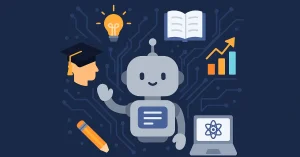The 4MAT Learning Model is an extended form of the experiential theory of learning. No wonder teachers have now mastered the art of how to teach online. However, with such a huge availability of various kinds of learning models, it often becomes difficult for the teachers to select a definite model for the students. 4MAT is one of the learning models that exist in the world of education. It is that method of learning that combines and encourages continuous learning and development.
In this blog, we will discuss the 4MAT Learning Model and the various quadrants of learning that it entails. So, keep reading the article till the very end to know the multiple aspects of the 4MAT Learning Style.
What Is The 4MAT Learning Style?
With technology changing the face of education, every learning model has been upgraded to a great extent. Developed by Bernice McCarthy in 1980, the 4MAT Learning Cycle empowers the students to think critically, acquire an in-depth understanding of the topic, absorb facts and build comprehension skills.
A standard, basic learning framework is provided to the students, and they use that to derive knowledge and get a basic concept of the topic being taught. It makes use of the strategies of right mode and left mode. Four main concepts are integrated into the learning cycle of 4MAT. These include experiencing, conceptualizing, applying, and refining or filtering.
This learning model of the 4MAT is based on the four various learning modes that David Kolb has invented. Bernice McCarthy, the developer of the 4MAT Learning Model, made use of the different information processing ways of the two parts of the human brain (right brain and left brain). She came up with the result of a complete eight-step model that constitutes four quadrants. We will discuss this model in the next section.
The Detailed 4MAT Learning Model
The 4MAT Learning Style is a complete cycle of learning styles and techniques and starts from one quadrant and ends in the last or fourth quadrant. Each quadrant of the learning model primarily stands for the following:
- WHY?
- WHAT?
- HOW?
- IF?
The further subdivisions of these four quadrants have been explained below.
The 8-Step Learning Model
Apart from the four main stages of learning, each step further has a distinct learning method. All the quadrants have two learning mode interpretations depending upon the information analysis of the right and left brain. While going through the diagram of the 8-step quadrant-based 4MAT learning model, you should go through the contents in a clockwise direction. Let’s have a look at these quadrants and what all these represent.
Quadrant 1, Part 1- Connect
This part of the quadrant answers the question of ‘Why?” It uses the right brain and gives the students the reason behind why they are studying a particular topic or lesson and motivates them to do something by giving them a complete knowledge of the cause of doing so.
Quadrant 1, Part 2- Attend
This uses the left brain and asks the students to participate in a discussion and then understand the varied aspects of a particular subject.
Quadrant 2, Part 1- Image
This part once again takes the help of the right side of the brain. Teachers encourage the students to shift from the concrete to the abstract aspect of things. They will gain the ability to visualize the topics and gain a clear understanding of the subject matter.
Quadrant 2, Part 2- Inform
This involves the educator making the students understand a topic. The basic concepts and essential facts about a particular case or subject are shared with the students, who grasp the information and acquire knowledge.
Quadrant 3, Part 1- Practice
The question of ‘how is answered here, and the students are made to complete worksheets and conduct experiments to gain knowledge.
Quadrant 3, Part 2- Extend
In this step of the learning model, students add to the teaching material and stuff by researching, completing projects, and compiling data.
Quadrant 4, Part 1- Refine
This is an analytical activity that makes use of the left side of the brain. Students are made to gather extra information after critically thinking and analyzing the topic from a closer look.
Quadrant 4, Part 2- Perform
This stage involves the students explaining a particular concept to their peers based on their understanding of that topic. They will have to evaluate their limitations and improve upon their mistakes.
Conclusion
The 4MAT Learning Model is an inclusive learning style that can match the interests of various groups of learners such as dynamic, imaginative, analytical, and common sense learners. Teachers can base their teachings on this model and witness its several benefits in the students.





